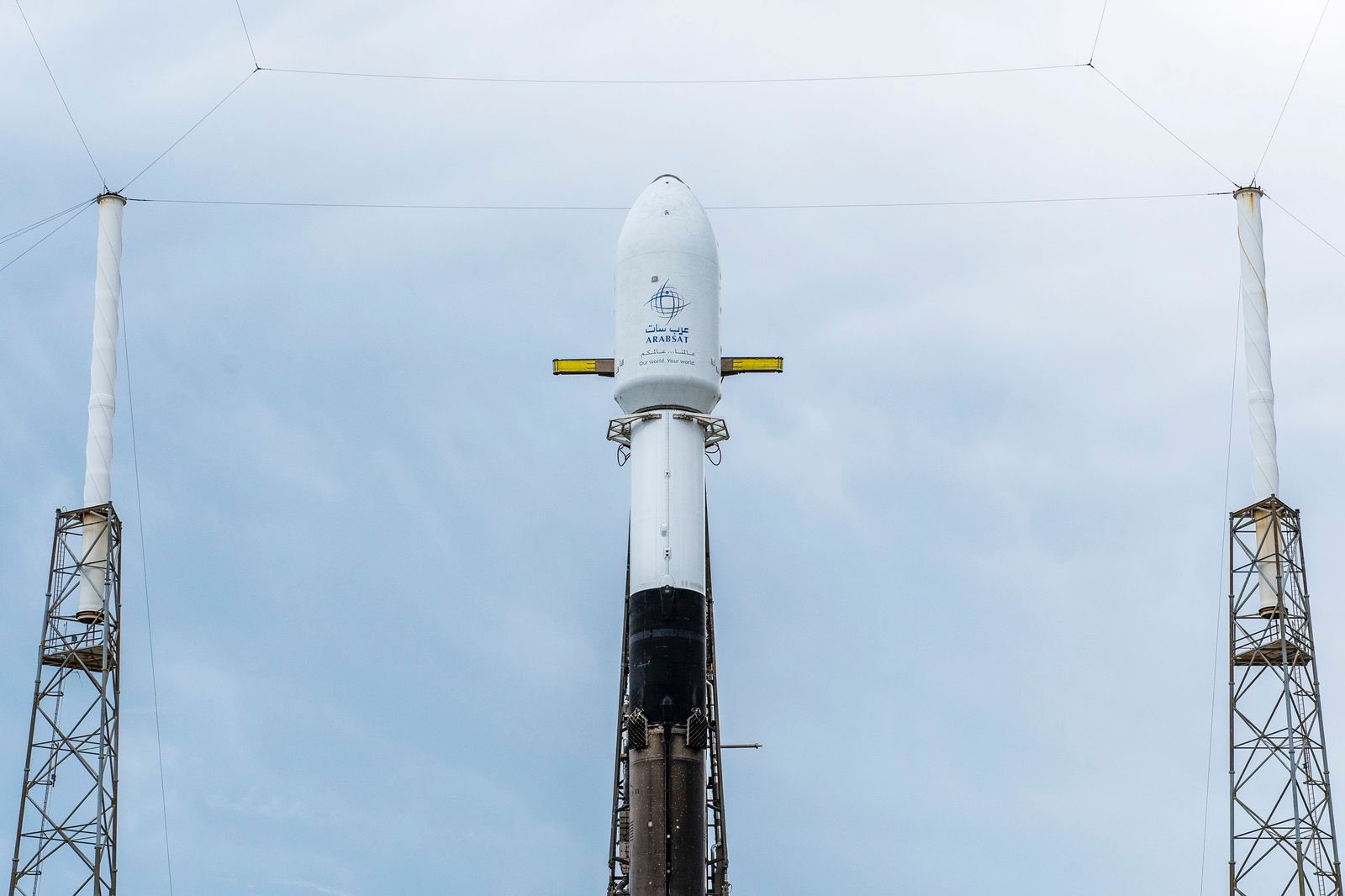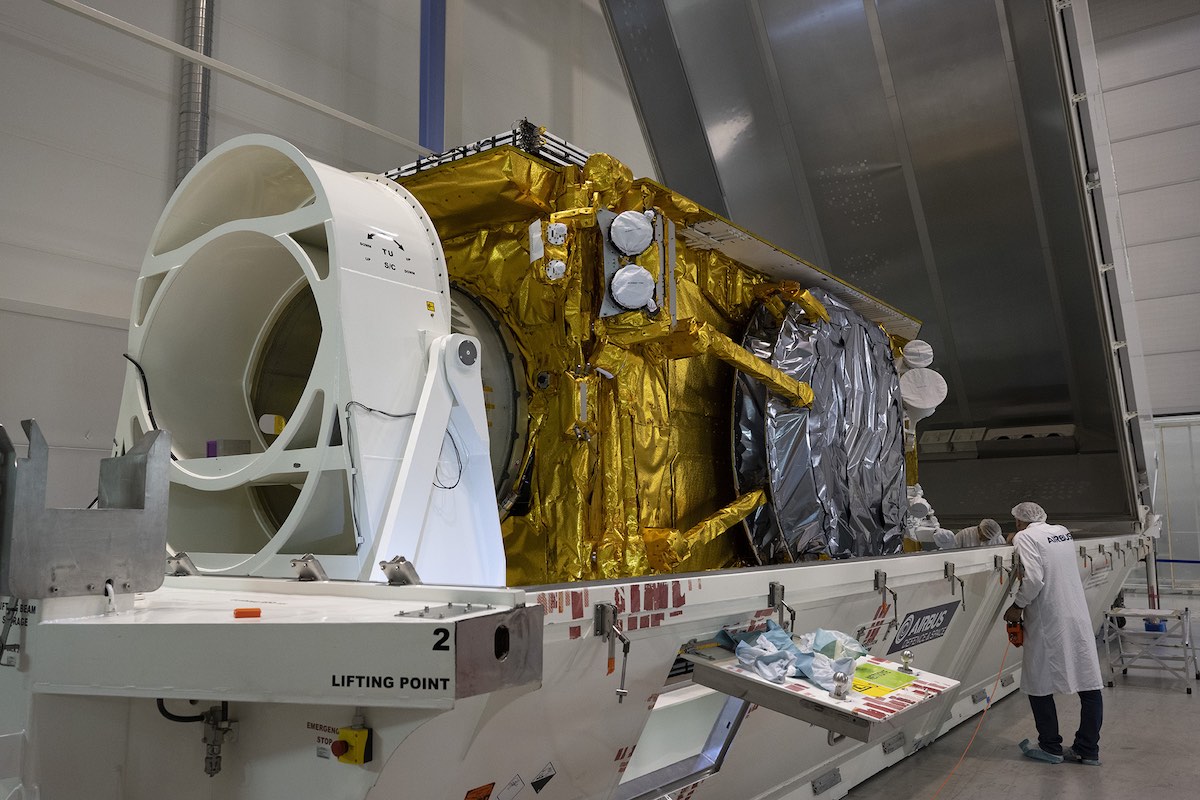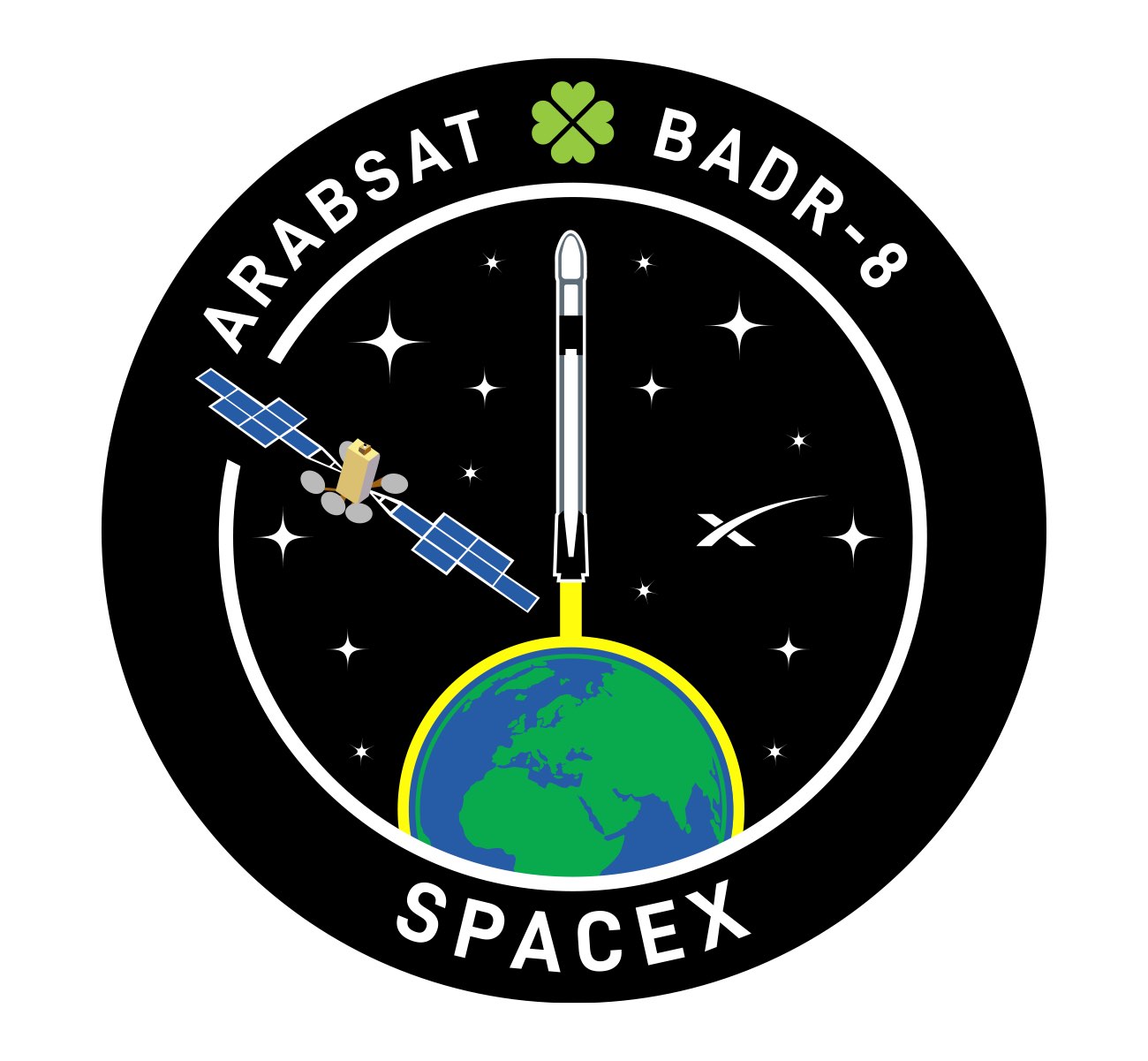Author’s Note: Updated at 1:30 am EDT (0530 UTC) on May 24 after a scrub of the first Badr 8 launch attempt.
SpaceX scrapped a launch attempt early Wednesday at Cape Canaveral because of bad weather, delaying the loading of an Airbus-built communications satellite for Arabsat until Wednesday night.
Falcon 9 opens a roughly two-hour launch window at 11:25 pm EDT Wednesday (0325 UTC Thursday), but there is a 25% chance of favorable weather at the start of the launch window.
Dense cloud cover from an evening thunderstorm did not clear in time for SpaceX’s Falcon 9 launch Tuesday night into Wednesday morning, causing a 24-hour delay.
When it lifts off, the Falcon 9 rocket will head east from Cape Canaveral about half an hour later to send the Badr 8 satellite into an elliptical geostationary transfer orbit. The launch will mark SpaceX’s 36th flight of the year and the 26th orbital launch attempt so far in 2023 from Florida’s Space Coast.
The nearly 10,000-pound (4.5-metric ton) Badr 8 communications satellite is enclosed within the Falcon 9’s nose cone. Built by Airbus Defense and Space, the Badr 8 satellite will provide C-band and Ku-band communications services to replace the capability currently provided by the aging 15-year-old Badr 6 satellite in geostationary orbit.
Badr 8 will move in the same orbital slot as Badr 8, located at 26 degrees east longitude on the equator. The Badr satellites are owned by Arabsat, a pan-Arab consortium of 21 member states based in Riyadh, Saudi Arabia. Badr 8 will provide television broadcasting services, video relay and data services across the Middle East and North Africa, Europe and Central Asia.
Arabsat says its investment in the Badr 8 project is about $300 million, including the spacecraft manufacturing contract with Airbus, the launch contract with SpaceX, insurance and ground infrastructure.

Badr 8 is based on Airbus’ Eurostar Neo satellite platform, the company’s new large space shuttle. 37 minutes after separating from the Falcon 9 rocket, Badr 8 will deploy its solar panels and run through post-launch checkouts under the supervision of Airbus ground controllers in Toulouse, France.
Badr 8 will then use low-thrust, high-efficiency plasma thrusters to maneuver into a circular geostationary orbit 22,000 miles (nearly 36,000 kilometers) above the equator, positioning it in an orbit that matches Earth’s rotational speed. Fixed view of its coverage zone from Europe, Middle East and Central Asia.
Orbital adjustments will take several months, and then Badr 8 should complete orbital testing and be ready to begin operational service for Arabsat later this year. The Badr 8 spacecraft is designed for a service life of 15 years.
Apart from its purpose as a commercial communications satellite, Badr 8 also carries an experimental laser communications payload for Airbus. The TELEO demonstration will test new optical communications technology in a partnership between Airbus, French space agency CNES and Safron Data Systems.
The TELEO payload will test the technology’s ability to beam data from a satellite to a ground station using lasers, allowing data transfer of up to 10 gigabits per second. Airbus and its partners hope to develop the technology for future flights using optical communications to achieve one terabit bit per second rate.
“This Teleo demonstrator will enable very robust, very high-capacity optical feeder link communications, which are naturally jam-resistant as part of Airbus’ development of a new generation of optical communications technology in space,” Airbus said in a press release.

Badr 8’s launch, if it happens Wednesday night, will cap a jam-packed lineup of SpaceX missions. This is the fourth SpaceX Falcon 9 launch in six days, following Saturday’s Falcon 9 launch from California and Axiom Space’s Auxin launch from Cape Canaveral on May 19 with payloads for the Falcon 9 flight, OneWeb and iridium from Cape Canaveral. 2 private spaceflight on Sunday from the Kennedy Space Center in Florida.
Engineers working from SpaceX’s launch and landing control center south of the Cape Canaveral Space Force Station will oversee the nighttime countdown leading up to the Badr 8 mission’s liftoff on Wednesday. A million pounds of kerosene and liquid oxygen propellants will fill the Falcon 9 rocket in the final 35 minutes before landing.
After the crews check that all technical and meteorological parameters are “green” for launch, the nine Merlin 1D main engines on the first stage booster will ignite with the help of an ignition fluid called triethylaluminum/triethylborane, or TEA-TEB. Once the engines reach full speed, the hydraulic clamps are opened to release the Falcon 9 to climb into space.
Nine main engines will generate 1.7 million pounds of thrust over two and a half minutes, propelling the Falcon 9 and Pater 8 into the upper atmosphere. The booster stage will close and separate from the Falcon 9’s upper stage to begin a controlled descent toward SpaceX’s drone ship “Just Read the Instructions” docked in the Atlantic Ocean.

The booster, designated B1062, extends titanium hypersonic grid fins and uses cold-gas nitrogen thrusters to control its orientation, then reactivates three of its nine main engines for a nearly 30-second braking maneuver during reentry. A final landing burn with the center engine slows the rocket to eight and a half minutes before the drone touches down.
A SpaceX recovery ship is in the Atlantic to retrieve the Falcon 9 rocket’s payload fairing after two clamshell sections of the nose cone parachuted into the ocean. Shortly after the Falcon 9’s upper stage engine ignites, the payload fairing ejects from the rocket in about three and a half minutes.
The Falcon 9 rocket will fire its upper stage engine twice to launch the Badr 8 spacecraft into an elliptical supersynchronous transfer orbit. Separation of Badr 8 from Falcon 9’s upper stage is expected at T+plus 37 minutes, 13 seconds.
Rocket: Falcon 9 (B1062.14)
Payload: Badr 8 communication satellite
Release Site: SLC-40, Cape Canaveral Space Force Station, Florida
Release Date: May 24/25, 2023
Launch window: 11:25 pm-1:22 am EDT (0325-0522 UTC)
Launch window: Immediate
Weather forecast: 25% probability of acceptable weather
Booster recovery: “Read the instructions” drone cruises across the Atlantic Ocean
Initialize the azimuth: East
Target Orbit: Super Synchronous Transfer Orbit
Start the timeline:
- D+00:00: Liftoff
- T+01:12: Maximum Aerodynamic Pressure (Max-Q)
- T+02:33: First Stage Main Engine Cut (MECO)
- T+02:36: Level separation
- T+02:44: Secondary engine ignition
- T+03:22: Fairing jettisoned
- T+06:29: First Stage Entry Combustion Ignition (Three Engines)
- T+06:51: First stage entry burn ends
- T+08:10: Secondary mechanical cut (SECO 1)
- T+08:23: First stage landing flare ignition (one engine)
- T+08:44: First stage landing
- T+29:03: Secondary engine restart
- T+30:02: Secondary mechanical cut (SECO 2)
- T+37:13: Separation of Badr 8
Working Statistics:
- 227th launch of a Falcon 9 rocket since 2010
- 238th launch of the Falcon rocket family since 2006
- 14th launch of Falcon 9 booster B1062
- 192nd Falcon 9 launch from Florida’s Space Coast
- 126th Falcon 9 launch from Pad 40
- 181st issue overall from Bad 40
- 168th flight of a reused Falcon 9 booster
- 2nd SpaceX launch for Arabsat
- 33rd Falcon 9 launch of 2023
- SpaceX’s 36th launch in 2023
- 26th orbital launch attempt from Cape Canaveral in 2023
Email the author.
Follow Stephen Clarke on Twitter: @Stephen Clark1.